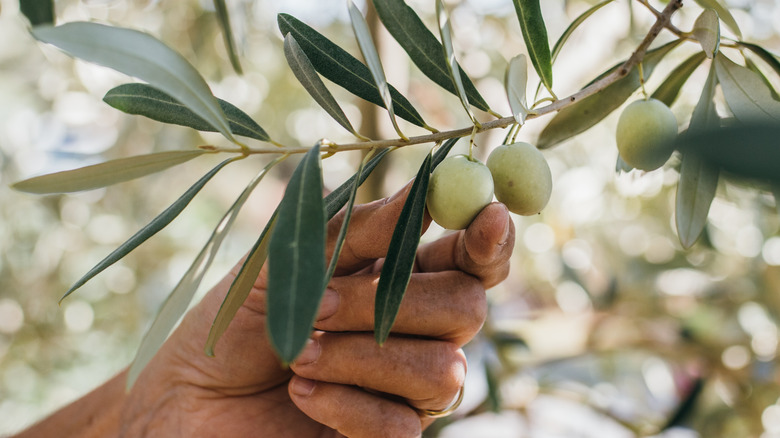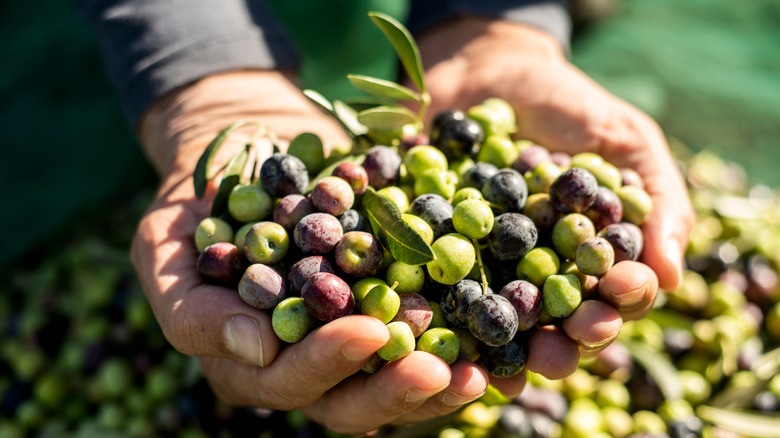Why You Should Always Buy Olives Harvested By Hand Over Machinery
A Greek salad isn't the same without a generous handful of olives on top. But not just any olives will do if you're aiming for the perfect flavor — hand-picked ones will offer the best possible taste. And for those who love chowing on this fruit, the earthy aroma that only in-season olives that have been processed quickly after harvesting can provide is simply irresistible. All olives are treated before eating, to rid them of their bitter taste when straight off the tree. So, care at all stages will result in the best tastes and least damaged fruits, whether they are processed using brine, salt, water, or lye treatments.
Picked by trained professionals who manually inspect and gently pluck each fruit off the tree, a hand-picked class of olives is better than the bulk-harvested kind by a mile and a half. This meticulous process ensures that only the finest olives are selected, minimizing bruising, which can quickly lead to spoilage. Bruised olives ferment rapidly and must be processed immediately, leaving them far from ideal to eat. Cracked and shriveled olives definitely won't make for pretty garnishing of your dirty martini.
Now, obviously, hand-picked anything is a hallmark of luxury, but you might be surprised to find that a jar of hand-picked Kalamata olives is not that much pricier than their mechanically harvested counterparts. So, why settle for less?
Are machine-harvested olives really that bad?
The quality of mechanically harvested olives depends on how you define it since there are different levels of machine use. In some cases, like semi-mechanized harvesting, where a mechanical shaker is used to shake the fruits off olive trees, the quality of the olives isn't impacted much at all. Research published in the Plants Journal confirms this, so olives harvested in this way will still make tasty table olives or produce good quality extra-virgin olive oil just fine.
However, fully mechanized harvesting using giant industrial harvesters tends to yield lower-quality olives. These machines are only ever used when the olives are overly ripe, sometimes on the brink of fermentation, in contrast to hand-picked olives, which tend to be picked in the early harvest. Unlike handpicking or semi-mechanized techniques, industrial harvesters don't care about the ripeness or condition, gathering whatever falls from the tree, including damaged or overripe fruit. It's why they often taste bad or just look unsightly with seams and cracks on the skin.
Buying cheap jars of machine-harvested olives might save you money, but you trade it off with taste and aroma. If you're after quality for your recipes or antipasti, it'll be wise to steer clear of them if you can.

